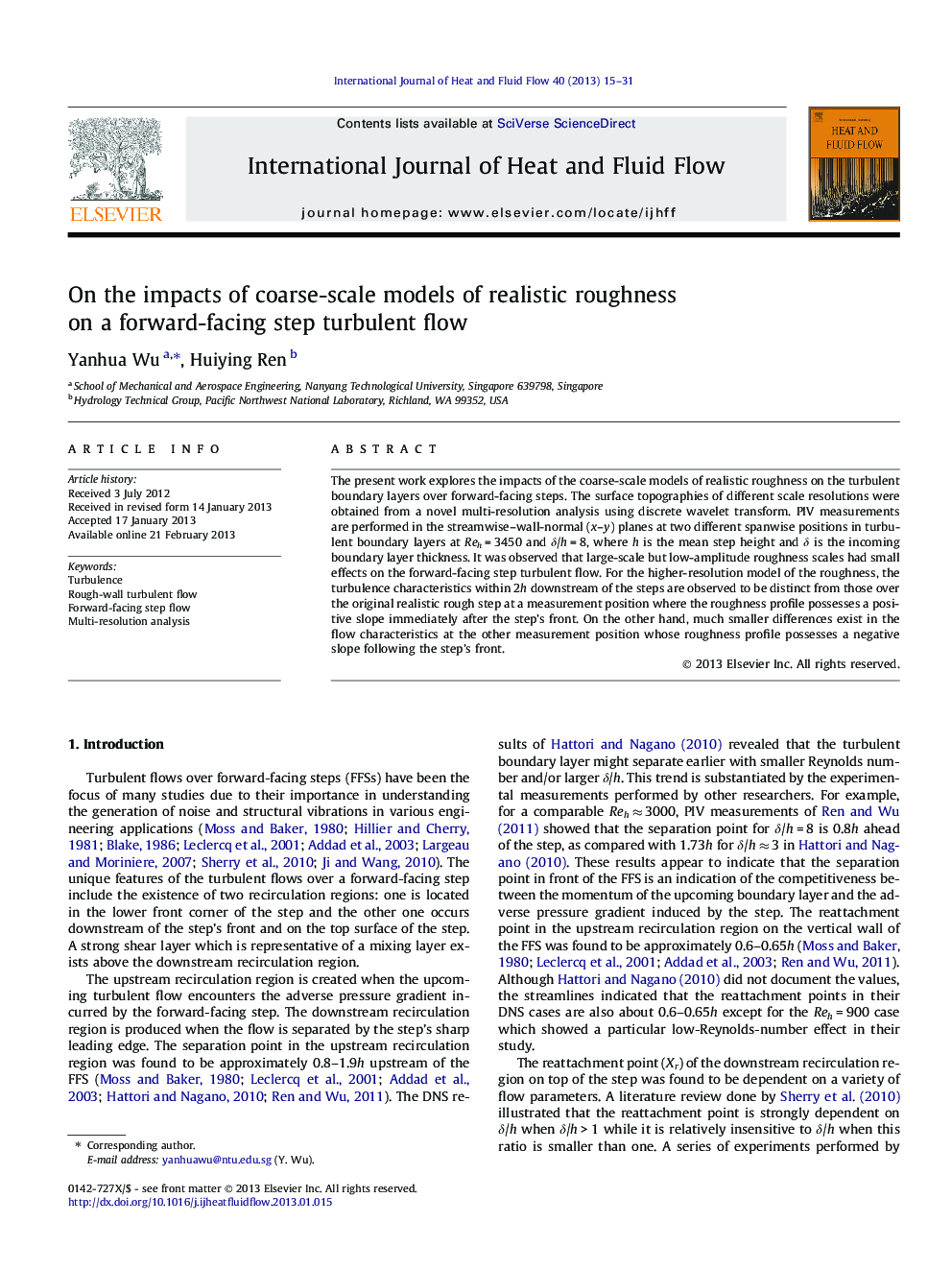| Article ID | Journal | Published Year | Pages | File Type |
|---|---|---|---|---|
| 655428 | International Journal of Heat and Fluid Flow | 2013 | 17 Pages |
The present work explores the impacts of the coarse-scale models of realistic roughness on the turbulent boundary layers over forward-facing steps. The surface topographies of different scale resolutions were obtained from a novel multi-resolution analysis using discrete wavelet transform. PIV measurements are performed in the streamwise–wall-normal (x–y) planes at two different spanwise positions in turbulent boundary layers at Reh = 3450 and δ/h = 8, where h is the mean step height and δ is the incoming boundary layer thickness. It was observed that large-scale but low-amplitude roughness scales had small effects on the forward-facing step turbulent flow. For the higher-resolution model of the roughness, the turbulence characteristics within 2h downstream of the steps are observed to be distinct from those over the original realistic rough step at a measurement position where the roughness profile possesses a positive slope immediately after the step’s front. On the other hand, much smaller differences exist in the flow characteristics at the other measurement position whose roughness profile possesses a negative slope following the step’s front.
► Discrete wavelet transform was used to produce coarse-scale models of roughness. ► PIV were performed in a forward-facing step flow with roughness of different scales. ► Impacts of roughness scales on various turbulence statistics were studied.
